Wittenberg on the Elbe is the home of Martin Luther, Philipp Melanchthon and Lucas Cranach. The Luther House, the Melanchthon House, the Town Church and the Castle Church bear witness to the city's importance in the 16th century. Wittenberg was the capital of the Saxon electoral district and once the ducal and electoral residence of Saxony-Wittenberg.

Marketplace of Wittenberg: When we visited there in June 2009, the Luther monument was being renovated.


During the guided tour of the city at the market place
The city church
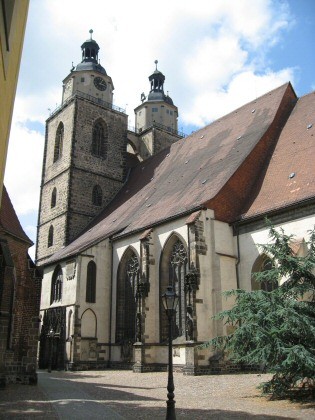
The distinctive double towers received their tower hoods in 1556/57. The late Gothic three-nave nave dates from the 14th century, the choir from the 13th century.
If you enter the church through the large west portal, you will immediately notice the huge altarpiece in the choir room. It is the famous Reformation altar by Lucas Cranach the Elder from 1547. The pulpit you see today is neo-Gothic. The original pulpit from which Luther preached can be seen in the Luther Hall.
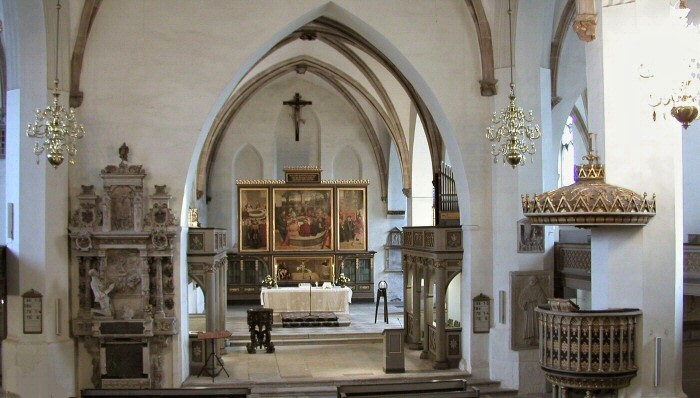
The Reformation altar
shows the basic features of Protestant congregational life and the Reformation's understanding of the church in its four picture panels, which have been preserved intact.
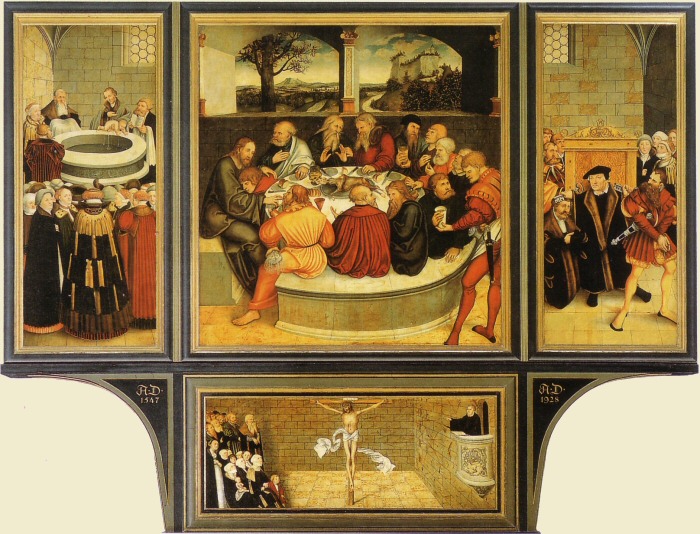
On the Reformation altar, the sacraments of the Church are depicted as Luther recognised them: the Lord's Supper in the centre, baptism on the left and confession on the right. Let us look at the middle picture, The Lord's Supper, Christ and the twelve apostles. This Last Supper opens up to the world: through large windows we look out onto a landscape with a castle that looks confusingly like the Wartburg where Luther translated the Bible. This is a reminder of the central importance of the Bible in Luther's teaching.
So the table is round. And where is the central place at a round table? There is none: Christ sits on the left and even if he is not seated on the apostles' bench, at least he does not immediately stand out from them. He belongs to the circle, it is a benevolent, attentive Christ, not a dominant Christ.
Our eyes are drawn to something that is happening diagonally opposite:
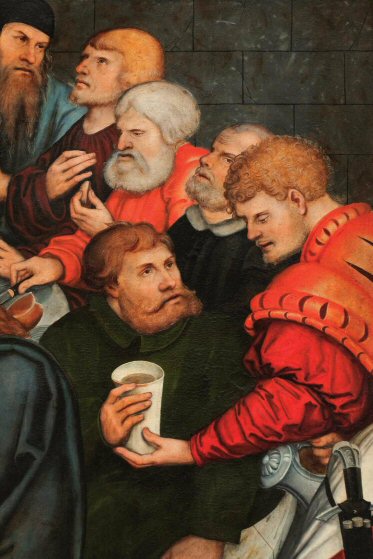
The apostle, who turns his gaze outwards while a servant hands him a white chalice, is none other than Luther himself. The chalice is a reminder that Luther reintroduced the use of the chalice at the Lord's Supper, but it also symbolises the new beginning. Cranach the Elder gave the servant the features of his son, who is also a painter. He will complete the side wings after his father's death and go down in history as Cranach the Younger. To the left of Luther sits Hans Lufft, who printed the first Luther Bible and thus contributed to its distribution.
Let us take a brief look at the side wings: on the left, Philipp Melanchthon, the great theologian and friend of Luther, baptising a child. Lucas Cranach the Elder and his wife Barbara watch the baptism.
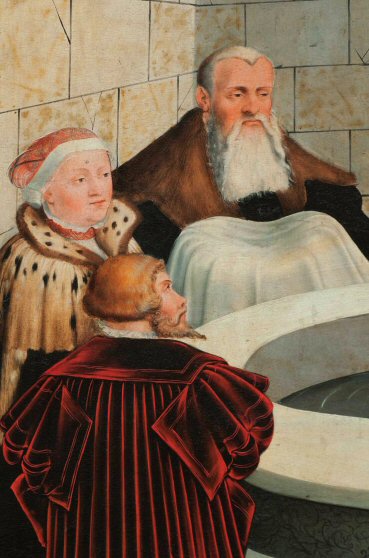
This is one of the few pictures in which Cranach's wife Barbara can be seen. On the right is another important figure of the Reformation, Pastor Bugenhagen in confession, with the keys of forgiveness, which until then had been reserved for the Pope. Protestantism, by the way, did not abolish confession as a sacrament until much later.
Finally, the predella (plinth painting) shows Luther giving a sermon, as well as Cranach the Elder and Katharina von Bora as parishioners.
All this makes this altar a true manifesto of the Reformation, the religious movement that will leave such a deep and lasting mark on Germany. Luther will never see the finished manifesto. He dies in 1546, a year before it is consecrated.
Source: Arte documentary, text by Jeanne Desto
e-book on the Reformation altar: http://edition-akanthus.de/digibooks/derreformationsaltar/
Behind the Reformation altar on the choir wall is another Cranach painting on the theme of the Reformation. It shows how the Catholics and the Reformed tend their garden. Above, two Reformed fetch manure from the Catholic garden.
The Castle Church
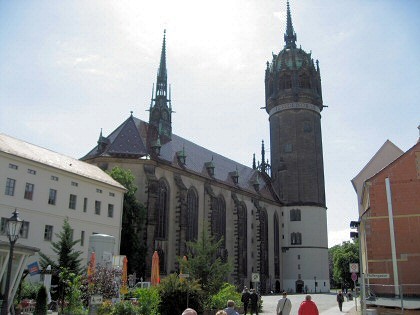
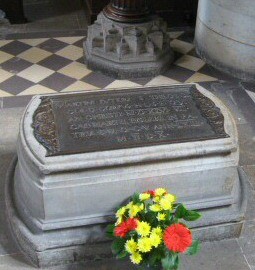
The castle church with the burial place of the Ascanians and Luther's tomb
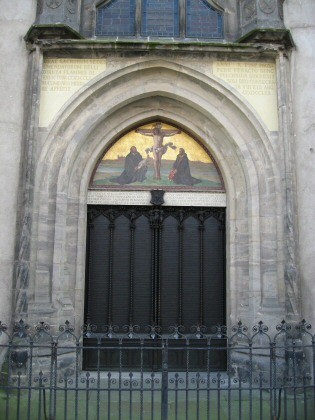
The much photographed Thesis Gate at the Castle Church.
The Cranach Courts
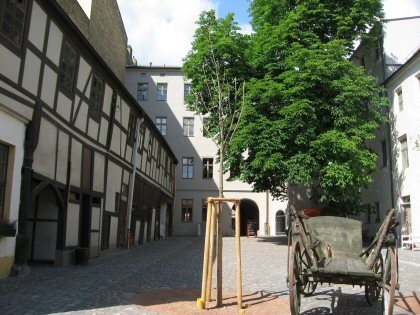
The Cranach courtyards and the Cranach buildings have been carefully renovated.
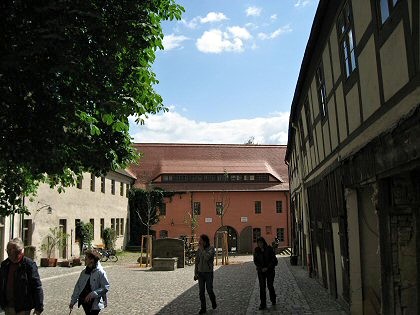
View of the workshop. Lucas Cranach the Elder employed up to nine journeymen here.